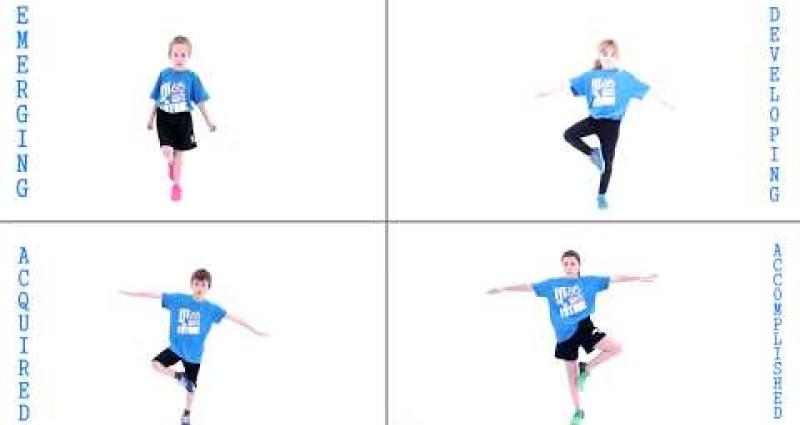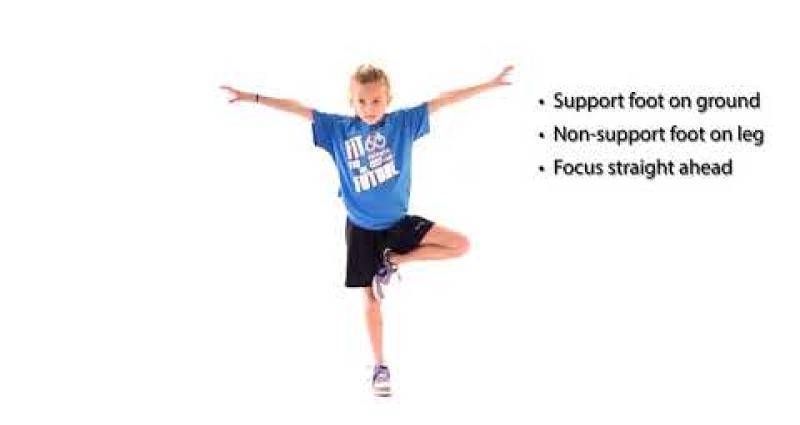Balancing
Balance is a stability skill and an essential part of everything we do. Balance starts developing soon after birth as children start acquiring skills such as rolling, sitting and walking. It is very important to focus on the skill of balance with young children as it is an essential part of everything we do and affects the development of other locomotor and object control skills. At the ages of 3 and 4 years old the skill of balance should be a focus in any physical literacy program.
Static Balance is balance while you are still, for example standing on one leg
Dynamic Balance is balance whilst on the move, for example walking along a balance beam
- Head up
- Aeroplane arms
- Eyes forward looking at something ahead of them e.g. tree
- Focus on eyes looking forward and keeping the head and body stable and upright
- Encourage children to keep their head and eyes up while performing balances
- Set-up Obstacle Courses that incorporate different balance challenges – balance along a line, stand on one leg, balance a bean bag on your head
- Play fun balancing games such as Musical Balances that challenge children to make different animal balances e.g. flamingo – stand on one leg
- Try some of our fun games that involve balancing: Beans, Turtles, Snakes and Islands These also help develop dynamic balance as children move around in space
- Introduce more difficult balance obstacles into your obstacle courses – balance beams, over and under hurdles, jump from hoop to hoop
- Try balancing on one leg on the preferred and non-preferred leg
- Practice balance on the move by performing different movements:
- Running on tip toes
- Giant steps
- Hopping
- Running backwards
- Changing directions
- Starting and Stopping
- Play balance challenges and have fun trying Beanbag Balances, Balance Twister and Rock, Bridge, Tree Tag
- Make harder obstacles in obstacle course – pick up bean bags or kick cones over while walking across balance beam, balance bean bag on head while standing on one leg, balance on one leg with your eyes closed
- Try out different equipment – bear feet rope walkers, jumping balls that you sit on, stilts
- Play games that involve dynamic balance such as Builders and Bulldozers and static balance such as Balance Twister
- Play games that start introducing strategy along with developing static and dynamic balance such as Connect It and Get the Beanbag
- Support leg still, foot flat on ground
- Non-support leg bent, not touching support leg
- Can balance on either leg
- Eyes focused forward
- Head and trunk stable and upright
- Arms still, may be extended for extra balance
- Arms waving erratically
- Looking at the ground
- When balancing on one leg: tucking non-support foot onto or behind support leg




